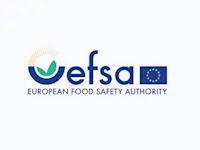
EU Ministers Press Commission on Delayed REACH Revision Amid Industry and Environmental Demands
EU Member States urge the Commission to accelerate the REACH revision, citing urgent health, environmental, and industry competitiveness needs.


The European Chemicals Agency (ECHA) has recently proposed the addition of O,O,O-triphenyl phosphorothioate (TPPT), identified by EC Number 209-909-9 and CAS Number 597-82-0, to its list of substances of very high concern (SVHC) under Article 57 of the REACH regulation. This proposal, submitted by the Netherlands, stems from TPPT's classification as persistent, bioaccumulative, and toxic (PBT).
TPPT is an organophosphorus compound commonly used as a flame retardant, plasticizer, and lubricant additive. It is primarily employed in industrial applications, including in the manufacturing of plastics, coatings, and rubbers, due to its ability to enhance material properties such as flexibility, durability, and resistance to fire.
While TPPT is valued for its industrial applications, it poses significant environmental and health risks, leading to its proposed classification as a substance of very high concern.
TPPT is widely used in various industrial processes. Some of the primary uses include:
Given its wide range of applications, the proposal to classify TPPT as an SVHC could have significant implications for industries that rely on this chemical. Companies using TPPT in their products would need to assess the potential risks and consider alternatives. Additionally, if TPPT is added to the SVHC list, manufacturers and importers would be required to provide more detailed information about its use and safe handling, and they may need to seek authorisation for continued use in the European Union.
The inclusion of TPPT on the SVHC list is currently open for public consultation. Stakeholders, including industry representatives, environmental organisations, and the public, are invited to submit their comments by 14 October 2024.
Foresight continuously tracks 1000s of sources and maps updates to your portfolio:




EU Member States urge the Commission to accelerate the REACH revision, citing urgent health, environmental, and industry competitiveness needs.

The EU has classified DBDPE as a substance of very high concern (SVHC) due to vPvB properties, affecting manufacturers and downstream users of flame retardants.

EFSA launches consultation on updating its Weight of Evidence and Biological Relevance guidance, aiming to streamline chemical risk assessment practices.
Subscribe to Foresight Weekly and get the latest insights on regulatory changes affecting chemical compliance.
Free forever. Unsubscribe anytime.
Read by professionals at